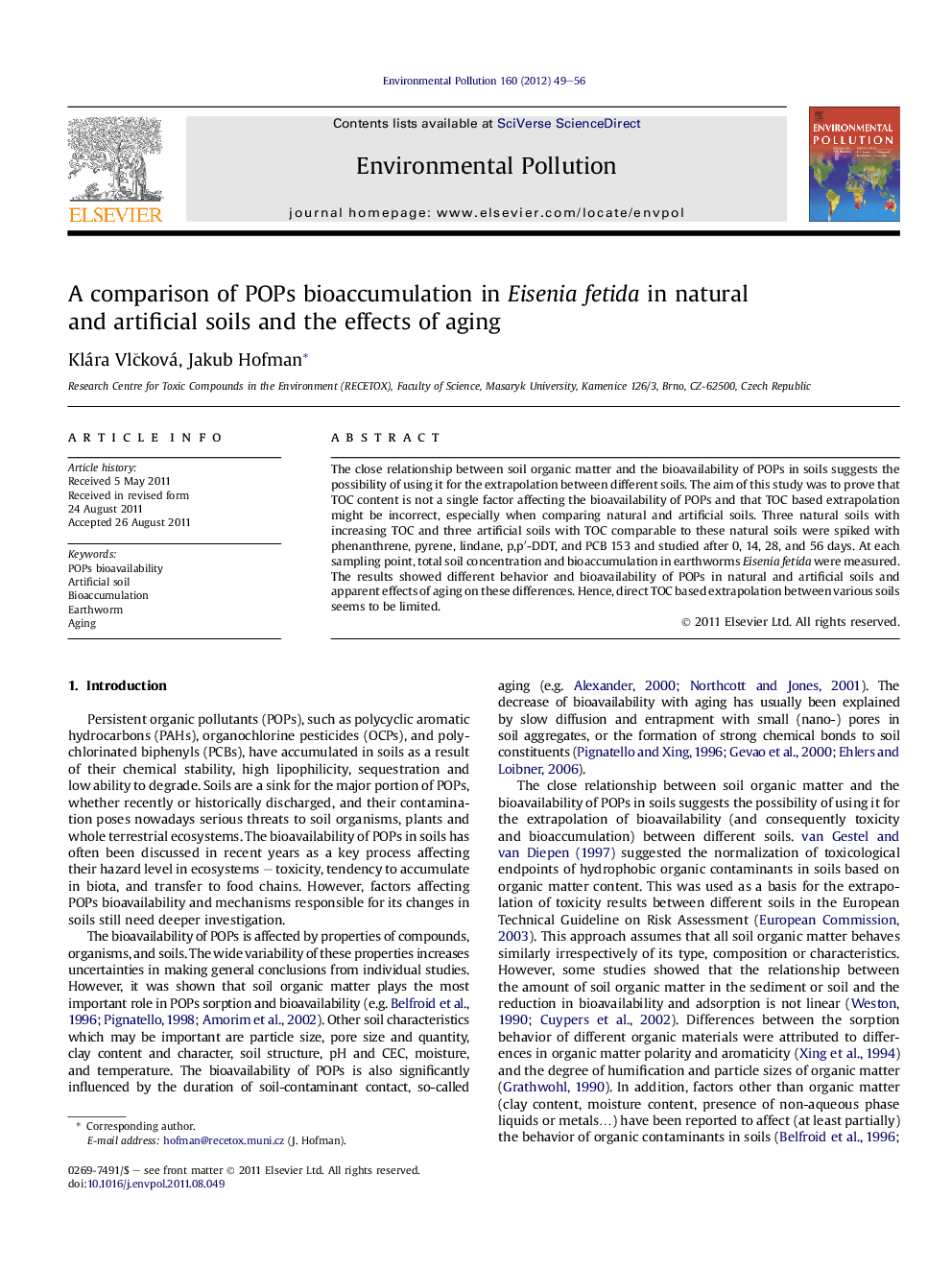| Article ID | Journal | Published Year | Pages | File Type |
|---|---|---|---|---|
| 4424683 | Environmental Pollution | 2012 | 8 Pages |
The close relationship between soil organic matter and the bioavailability of POPs in soils suggests the possibility of using it for the extrapolation between different soils. The aim of this study was to prove that TOC content is not a single factor affecting the bioavailability of POPs and that TOC based extrapolation might be incorrect, especially when comparing natural and artificial soils. Three natural soils with increasing TOC and three artificial soils with TOC comparable to these natural soils were spiked with phenanthrene, pyrene, lindane, p,p′-DDT, and PCB 153 and studied after 0, 14, 28, and 56 days. At each sampling point, total soil concentration and bioaccumulation in earthworms Eisenia fetida were measured. The results showed different behavior and bioavailability of POPs in natural and artificial soils and apparent effects of aging on these differences. Hence, direct TOC based extrapolation between various soils seems to be limited.
► Artificial and natural soils with the same TOC content were used in this study. ► BAF and total concentration of five POPs were measured during 56 days after spiking. ► Bioaccumulation was significantly lower in NS than in AS with the same TOC. ► Direct extrapolation according to TOC was possible for soils with levels >10%. ► Microbial degradation probably influences PAHs bioavailability.
